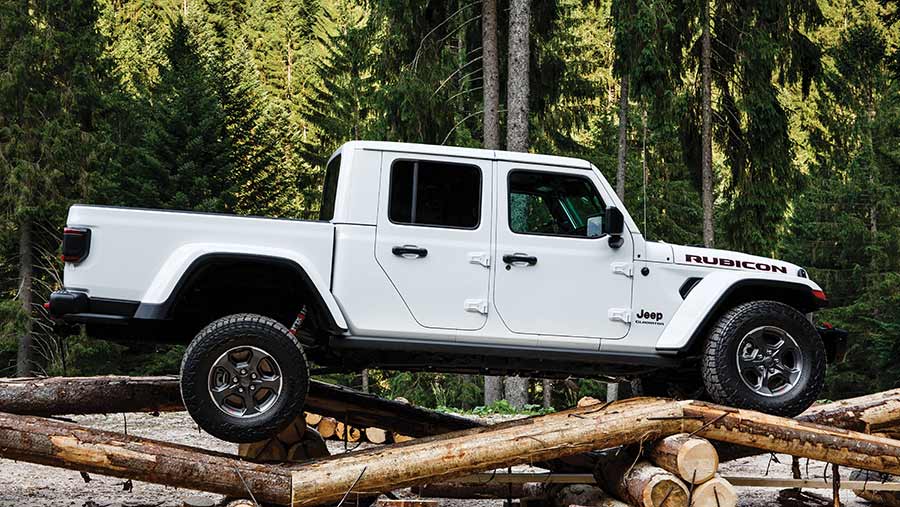Raring to take an unsteady grip on the elusive elements of traction? Particularly eager to tackle treacherous terrains or harsh weather conditions without wincing or wavering? Strap in your seatbelts then, folks! Prepare to take a gleeful plunge into the benefits of an All-Wheel-Drive system – an advantageous component that bolsters your ride’s stability and elevates your driving experience to an adrenaline-fueled cheerful challenge. Let’s tear through the concrete jungle to mountain tops, diving deep into how AWD provides significant juice for joyous jaunts and those jaunty journeys.
Table of Contents
Understanding All-Wheel Drive

All-wheel drive–often abbreviated AWD–is a dynamite feature enabling a car to deliver power to all four wheels simultaneously. Unlike rear-wheel and front-wheel systems that power either the back or front wheels, respectively, an AWD setup ensures that all wheels are engaged, resulting in a dispersion of power that can drastically enhance traction.
At its rudiment, AWD is a reactionary technology, often kicking in based on the need of the hour, which typically means when conditions are slippery or challenging. Thanks to rapidly advancing technology, many modern vehicles equipped with an automated AWD system use an electronic suite of sensors, accurately dissecting the road and driving conditions, and then distributing power accordingly.
But here’s where things get fascinating: not all AWD systems are created equal. There are primarily two types — full-time and part-time. In a full-time AWD system, power goes to all wheels all the time, whether you’re cruising down a bone-dry highway or taking on a snow-covered pass. Meanwhile, part-time AWD implies that the vehicle operates most of the time in two-wheel drive, but can automatically or manually engage all wheels when required.
Furthermore, there’s an intriguing concept known as “torque vectoring,” which is often found in high-performance or luxury AWD models. This technology allows the vehicle to not only split power between front and rear wheels but also between the individual left and right wheels. This is particularly handy for conquering a twisty, winding road where the vehicle’s capability to corner is tested.
So, it’s important to remember — when we talk about AWD, we’re not just talking about brute force. Instead, we’re referring to an intricate dance of power management, a ballet of high-tech components working together to maintain optimum control and safety. In its essence, AWD marries raw power with sophisticated technology, offering you a safer, more stable ride, and often, a more engaging drive. This advantage of AWD becomes more prominent when we consider different driving conditions— in snow, rainfall, or off the beaten path. That’s where the AWD shines like a knight in shining armor, but more on that later.
Advantages of All-Wheel Drive in Snowy Conditions

When Mother Nature decides to blanket our highways and peaceful suburbs with her fluffy, icy confetti, AKA snow, she creates a slick and often treacherous playground for vehicles. Cue the muscle of an All-Wheel Drive (AWD) vehicle. While front-wheel and rear-wheel drive vehicles are like figure skaters on the icy roads, the All-Wheel Drive uses its ice-chewed tires like cleats, delivering a compelling, performance that makes its winter-season capabilities apparent.
Remember how in school they taught that spreading the load evenly is better? Well, in AWD systems, it’s power distribution, not snickerdoodles or the attention of your mother-in-law that we’re divvying up. Instead of two wheels struggling like butlers carrying a burden they weren’t built for, the system delegating power to all four wheels means there’s more grip to get going and keep going. The tires can maintain their resolve, biting fiercely into the ice like a hot knife through butter.
Automobile engineers, the nerds of the freeway, have also equipped AWD systems with a smart and adaptive feature that analyzes traction. Imagine having a personalized forecast served up by a geeky car-weatherman living inside your AWD vehicle. When your ride is starting to slip, this weatherman sends a swift memo to the car regulators who instantly pass on power to the other set of wheels. Whether it’s navigating that slick curve, commencing an uphill climb, or barrel racing your stuck-in-the-snow neighbors, the All-Wheel Drive’s performance is the equivalent to a conductor perfectly managing a treacherous symphony of snow, ice, and gravel.
Everything said and done, true to the law of Newtonian physics, what goes must also stop. This is where another advantage of AWD rolls in. During the treacherous slowdown in slippery conditions, AWD vehicles typically exhibit more control and less dramatic skid, again thanks to the power evenly distributed among the wheels.
Of course, we’ll still need to throw in a dash of common sense with these mechanical perks – no bruising accelerator stomp or break-neck speeds. Even with all four wheels pulling their even weight, we don’t want to volunteer for an unplanned off-road experience. But coupled with careful driving, these AWD advantages may be the toasty difference between wrestling with icy roads and confidently cruising through the winter months.
Benefits of All-Wheel Drive in Off-Road Conditions

All-Wheel Drive (AWD) is not just for combating snow and ice; it proves its mettle in off-road conditions as well. This is where the center differentials in AWD systems show their true worth, helpfully distributing power among the wheels. And when it comes to rough and rugged trails, deep sand, or steep and rocky inclines, a good AWD system is worth its weight in torque.
When crossing rocky or uneven terrain, standard two-wheel drive vehicles struggle to maintain traction. If one of the driven wheels loses contact with the ground, it’s game over. However, an AWD vehicle distributes power and torque evenly to all wheels, providing consistent traction and keeping you moving. This power distribution means that even if a wheel loses purchase, the others are still getting power efficiently, allowing you to continue smoothly on your course.
Off-road conditions often come with deep mud, slippery grass, or loose sand, where many vehicles will find themselves stuck – spinning their wheels to no avail. An advantage of AWD here is the ability to send torque to the wheels with the most traction. You could almost think of it as the car identifying the wheel “winning” the grip competition and rewarding it with more power. It’s like rewarding the dog who fetches the quickest, except here we’re talking about your costly wheels, not some lucky golden retriever.
Off-roading also brings challenges of steep gradients and sharp turns, without the benefits of smooth tarmac. Here again, AWD shines. With equal power to all wheels, not only is climbing a possibility, but turns are also made smoother. The risk of flipping over is drastically reduced as the car maintains balance throughout the ascent, descent, and while throwing itself around corners.
Despite common misconceptions, an AWD system does more than split power equally between the front and rear axles. Sophisticated AWD systems – found in most modern-day off-roaders – adjust torque distribution to each wheel or axle in real-time, depending on the condition and traction levels. This capability to automatically adjust power transmission can make all the difference between getting stuck and powering through.
In conclusion, AWD is a must-have for any off-road adventure. It provides the driver with increased stability, traction, and confidence when faced with less-than-ideal off-road conditions. Now, whether you buy an AWD vehicle or enhance a two-wheel-drive vehicle with an AWD conversion kit for your weekend off-road trip is up to you. We’re just here to spell out the clear advantages of the system when you venture off the beaten path.
All-Wheel Drive in Rainy Weather

When the skies open up and the road becomes slick with rain, an all-wheel drive vehicle can step in as your new best comrade. It’s like having an invisible co-pilot virtually assisting you across the wet surfaces. The power distribution to all four wheels simultaneously provides better traction and control when compared to two-wheel drive cars.
Where the hydroplaning threat is a real concern with front or rear wheel crive vehicles, those with all-wheel drive experience a reduction in this risk. Hydroplaning happens when your tires lose contact with the road due to a layer of water beneath them, often leading to loss of steering control. However, the additional two tires pulling or pushing with all-wheel drive can help maintain traction even in these perilous conditions.
Particularly during heavy rainfalls or on roads with standing water, standard two-wheel systems might have issues with traction due to the force being split between just two tires. The all-wheel drive system, on the other hand, is more efficient at distributing power and can generally help the car keep better contact with the road. This also translates to less potential for spinning out or careening in the event of a sudden stop or cornering manoeuvre.
Another notable advantage is the improved acceleration on wet roadways. When it’s raining cats and dogs and you need to overtake or merge into highway traffic swiftly, the extra traction supplied by all-wheel drive can be a formidable ally, aiding to prevent the loss of control that might occur with a jolt of power in a two-wheel vehicle.
While we all would wish for sunny blue skies, rain is a fact of life. And when it comes raining down, an all-wheel drive vehicle can make all the difference between a stressful journey or one where you feel secure, in control and confident, regardless of what Mother Nature has in store. Whether it’s a light drizzle or a heavy downpour, it’s always reassuring to know that all four of your wheels are working together to keep you moving forward safely.
However, while an all-wheel-drive vehicle can give you an advantage during rainy weather, it is not a cure. Good driving habits are key to safe driving in any type of precarious weather, including keeping a safe distance between cars, decreasing your speed and attentiveness to the road conditions. Remember, your safety is paramount no matter what the weather.
Maintaining an All-Wheel Drive Vehicle

An all-wheel-drive vehicle, while the ultimate choice for tricky terrains and unforgiving weather conditions, is not immune to the rigors of daily driving. Regular maintenance is exigent, not just to keep things running smoothly but also to ensure that your AWD vehicle belies its age for years, maybe decades.
Let’s start with your tires. Tires are the main point of contact between your vehicle and the road, and with all-wheel drive, all of them are power-driven. Maintaining even wear across all tires is a cardinal rule of preserving your drivetrain. So, rotate your tires regularly – every 5,000 to 7,500 miles – to ensure even wear, which in turn offers better traction, enhances fuel efficiency, and increases the longevity of your tires.
Next up is the differential(s). If your all-wheel-drive vehicle has a center differential, maintaining it involves replenishing its fluid typically between 30,000 to 60,000 miles. Check your owner’s manual for the exact mileage. The same rule applies to the front and rear differentials. They have their own service intervals and using the correct fluid is a make-or-break requirement. No matter how ingeniously engineered, these components exist in a world of brutal forces, and neglecting their maintenance can precipitate pricy repairs.
The other lifeline of your AWD system is the transfer case, particularly for on-demand AWD systems. This component divides the power between the front and rear axles. It needs a periodic fluid change – a quick look at your owner’s manual will save you the guesswork.
Consider the way you drive, too. If the only boulder you’re climbing is the access ramp to the Whole Foods parking lot, you probably don’t need to hit the service center as often. But if you’re heavily into off-roading, towing, or driving in extreme weather conditions, these factors necessitate more frequent maintenance checks.
Lastly, some all-wheel-drive vehicles require a power-steering fluid change at designated intervals. Again, your owner’s manual should guide you here. Given the importance of power steering to your vehicle’s handling, this is a maintenance point that shouldn’t be neglected.
In essence, owning an all-wheel-drive vehicle can be a liberating experience, provided you maintain it properly. Follow these maintenance tips and your AWD motor will continue to offer the freedom and security that all-wheel-drivers prize so highly.
FAQs
Why Is All-Wheel Drive Important?
What Are The Advantages of AWD In Snow?
Does All-Wheel Drive Increase Traction?
Conclusion
In the whimsical wonderland of wheel dynamics, an all-wheel drive reigns supreme. Whether it’s over a snow-laden driveway, slushy highway, or treacherous off-road terrain, investing in an all-wheel drive provides a palpable difference. It exudes confidence, stability and control, eradicating the perils of challenging road conditions. Keep in mind, it doesn’t defy physics, but it surely gives you a competitive edge. When tussling with Mother Nature’s surprises, an all-wheel drive moves from being a luxury to a necessity.
